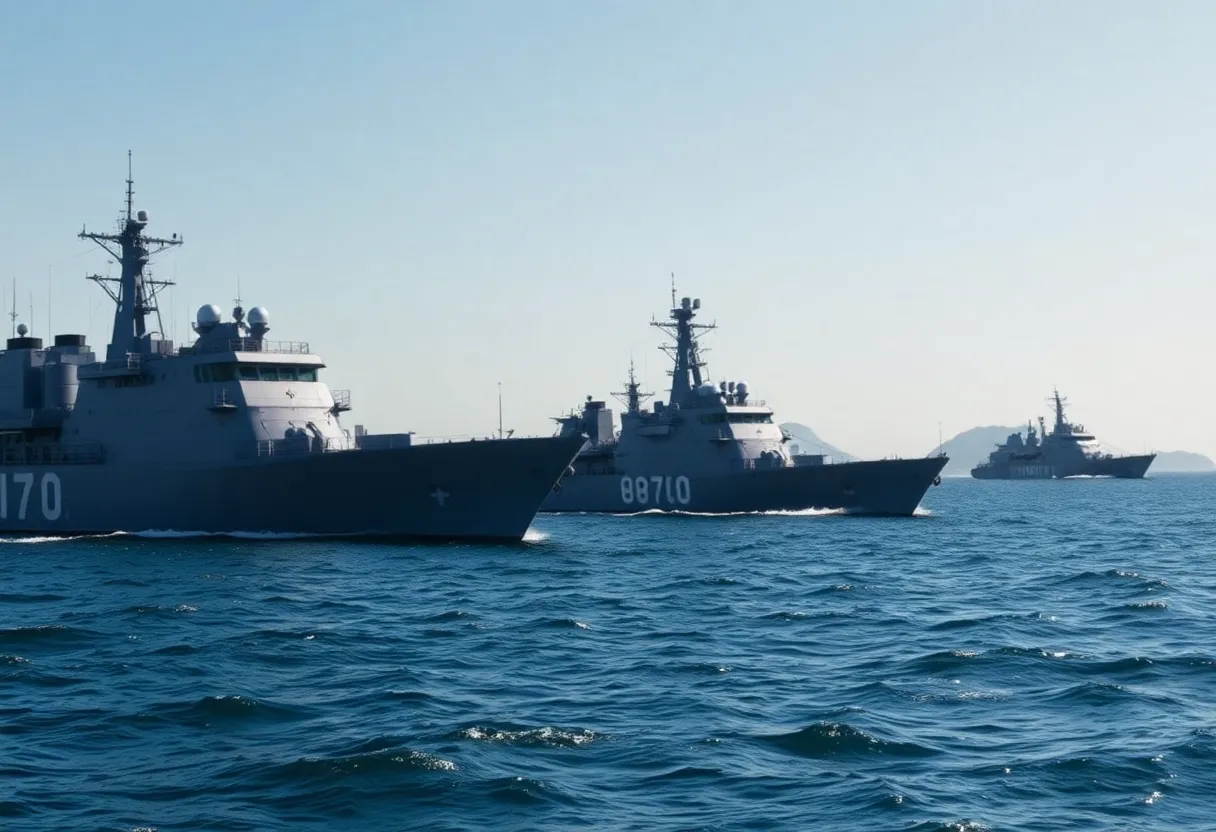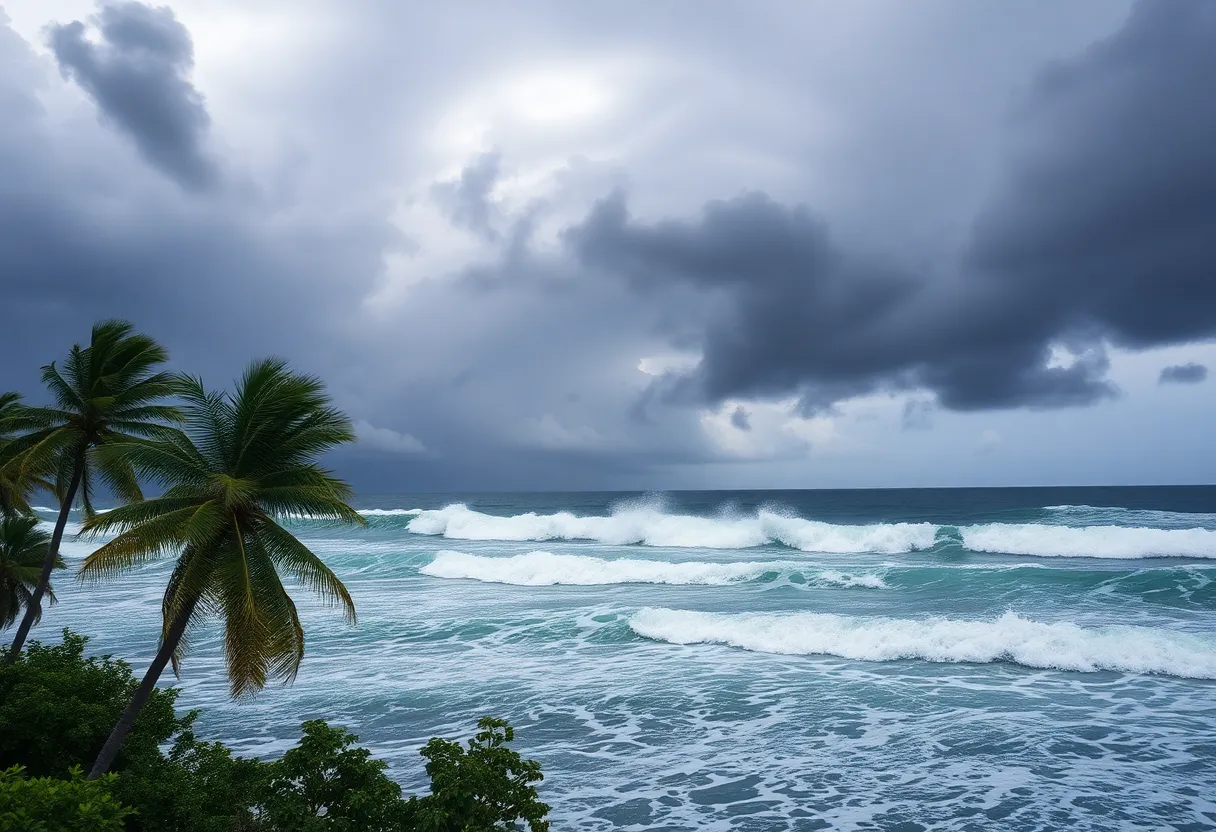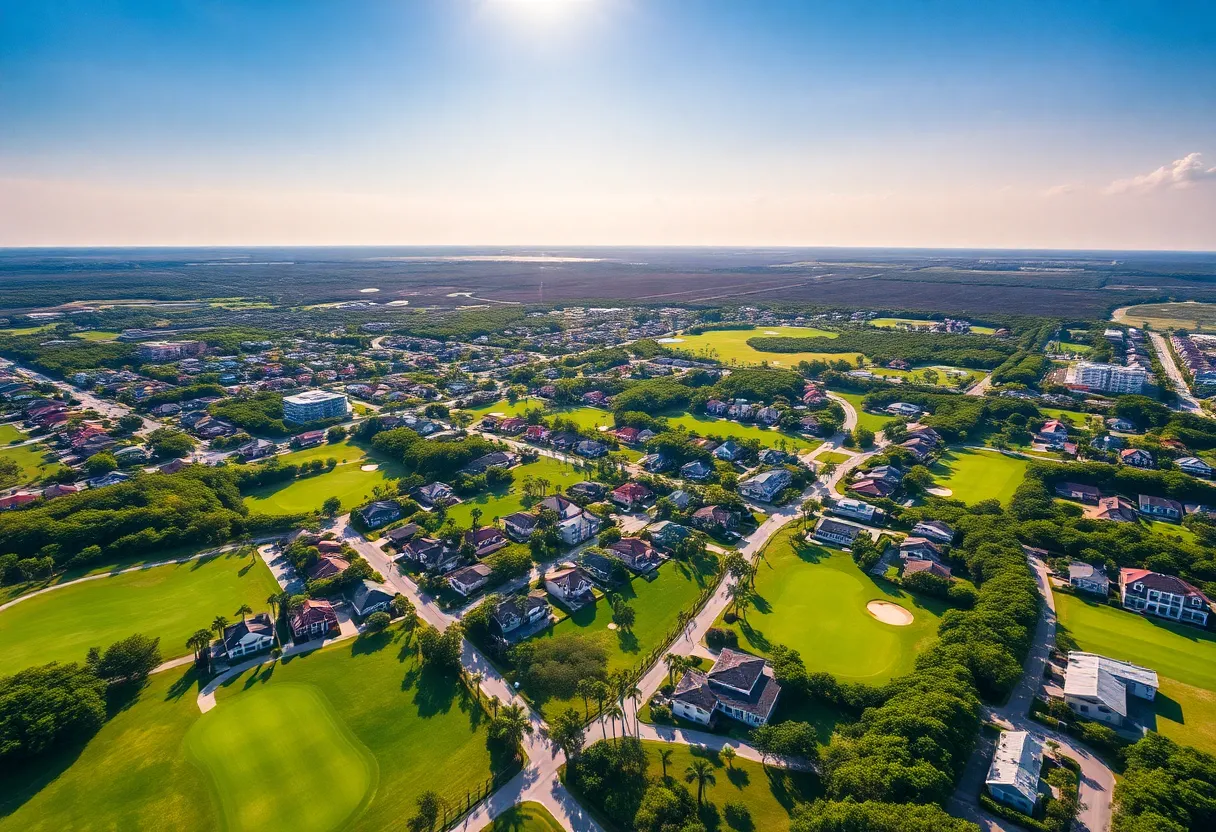News Summary
China has escalated military and coast guard patrols near the contested Huangyan Dao reef, intensifying tensions with the Philippines, which claims the territory. The reef is situated within the Philippines’ exclusive economic zone, and recent Chinese actions, including a list of base points, signal heightened assertiveness. The Philippine Navy has denied sightings of specific Chinese patrols but remains vigilant. The government is considering new military exercises with allies in response to the situation, while calls for international coalitions to address the trust deficit between the nations are on the rise.
China Conducts Military Patrols Near Disputed Huangyan Dao Reef
The waters of the South China Sea are heating up once again as **_China has ramped up military and coast guard patrols_** around the disputed Huangyan Dao, a reef that the Philippines calls Bajo de Masinloc. This recent development has brought forth significant **_pushback from the Philippines_**, which firmly denies China’s claims of sovereignty over the area.
Huangyan Dao: A Point of Contentions
Huangyan Dao, controlled by China since 2012, is situated much closer to the Philippines’ Luzon Island than to China’s Hainan Island, adding another layer of complexity to this ongoing dispute. The reef is also located within the Philippines’ internationally recognized **_230-mile-wide exclusive economic zone (EEZ)_**, making the situation even more contentious.
In November 2024, China made headlines when it released a list of **_16 base points connected by straight baselines_**, which purportedly asserted jurisdiction over the surrounding waters. This move has not gone unnoticed, especially with the **_Chinese People’s Liberation Army Southern Theater Command_** making claims of conducting “combat readiness patrols” in the area. The command stated it has been **_enhancing control_** through a consistent increase in air and naval patrols since May.
The Philippines Responds
On the other side, the situation in the Philippines continues to evolve. The Philippine Navy has kept a watchful eye on the situation, with Rear Admiral Roy Vincent Trinidad, the navy’s spokesperson, denying any sighting of **_Chinese combat readiness patrols_** within the Philippines’ EEZ. He suggested that reports of activity by the **_PLA Navy_** might merely be part of China’s strategy to shape public perception and international discourse.
As of early last Saturday, two **_Chinese coast guard ships and six maritime militia vessels_** were observed at Huangyan Dao, along with fishing boats from Vietnam and Taiwan, indicating that activities in the area are quite dynamic. Countering these claims, the **_Chinese military_** insists that its patrols are necessary to safeguard sovereignty and maintain stability.
Future Strategies for the Philippines
In light of these developments, the Philippine government is weighing its options. Discussions around conducting additional military exercises with the **_United States and other allies_** are underway to counter China’s escalating presence in the disputed waters. Secretary for Foreign Affairs, Enrique Manalo, mentioned potential new **_diplomatic arrangements_** with China, assuming these won’t compromise Philippine sovereignty.
It’s worth noting that back in 2016, a Hague-based arbitral tribunal ruled in favor of the Philippines, invalidating China’s extensive territorial claims in the South China Sea. However, Beijing dismissed the ruling as illegitimate, further exacerbating tensions.
Increasing Tensions Under a New Administration
The relationship between the two nations has become more strained under the governance of President Ferdinand Marcos Jr. As a result, the implications for the U.S. potentially stepping in through the **_Mutual Defense Treaty_** could become more significant in the coming days.
The Philippine Coast Guard recently dispatched the **_BRP Cabra_** to confront a Chinese coast guard cutter operating within its EEZ. Coupled with video footage showing the Philippine crew issuing warnings to the intruding Chinese vessel, the Philippines is invoking the **_United Nations Convention on the Law of the Sea_** to assert its rights.
The Call for Coalition
With all these developments, Philippine Defense Secretary Gilberto Teodoro has pointed out the **_“trust deficit”_** between the two nations and highlighted the urgent need for building international coalitions. This collective effort aims to strengthen deterrence against possible aggressive maneuvers from China.
As these tensions continue to unfold, both nations are in a complicated dance of sovereignty, security, and diplomacy in a region that has seen its fair share of disputes.
Deeper Dive: News & Info About This Topic
- Newsweek: China Shows Force in South China Sea
- South China Morning Post: Trust Building in South China Sea
- Nikkei Asia: Philippines Open to Deal with Beijing
- US News: China Urges EU to Stop Provoking in South China Sea
- Wikipedia: South China Sea

Author: STAFF HERE ORLANDO WRITER
ORLANDO STAFF WRITER The ORLANDO STAFF WRITER represents the experienced team at HEREOrlando.com, your go-to source for actionable local news and information in Orlando, Orange County, and beyond. Specializing in "news you can use," we cover essential topics like product reviews for personal and business needs, local business directories, politics, real estate trends, neighborhood insights, and state news affecting the area—with deep expertise drawn from years of dedicated reporting and strong community input, including local press releases and business updates. We deliver top reporting on high-value events such as Orlando International Fringe Theatre Festival, Megacon Orlando, and Central Florida Fair. Our coverage extends to key organizations like the Orlando Economic Partnership and Hispanic Chamber of Commerce Metro Orlando, plus leading businesses in leisure and hospitality that power the local economy such as Walt Disney World Resort, AdventHealth, and Universal Orlando. As part of the broader HERE network, including HEREJacksonville.com, HEREPetersburg.com, HERETallahassee.com, and HERETampa.com, we provide comprehensive, credible insights into Florida's dynamic landscape.




